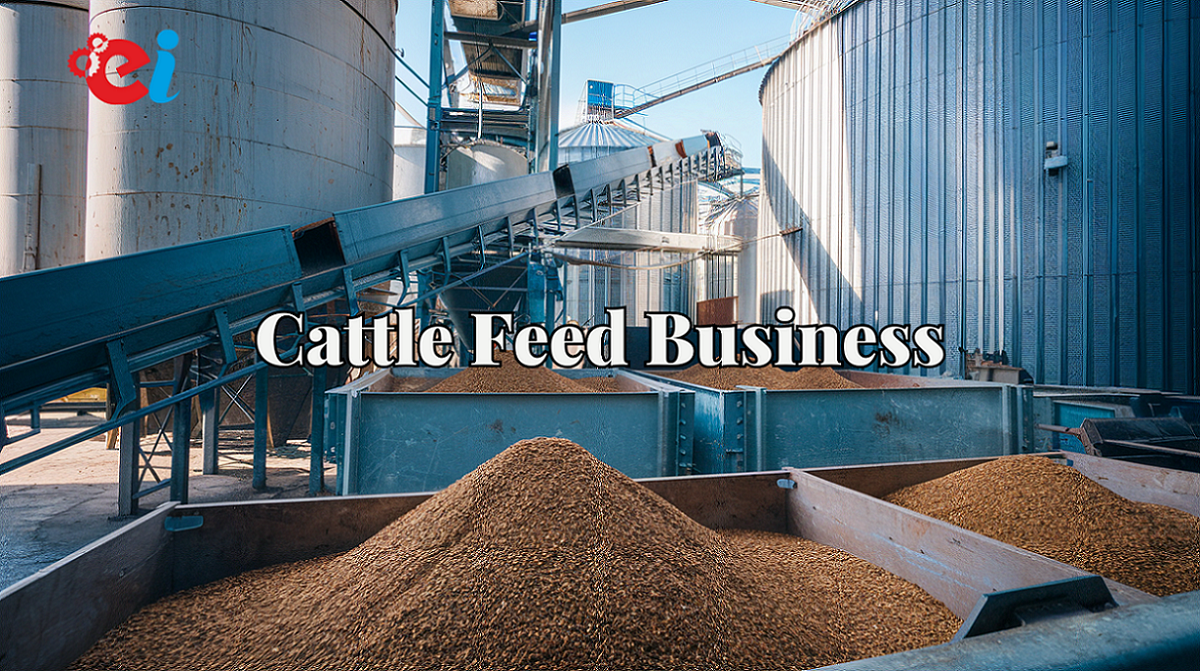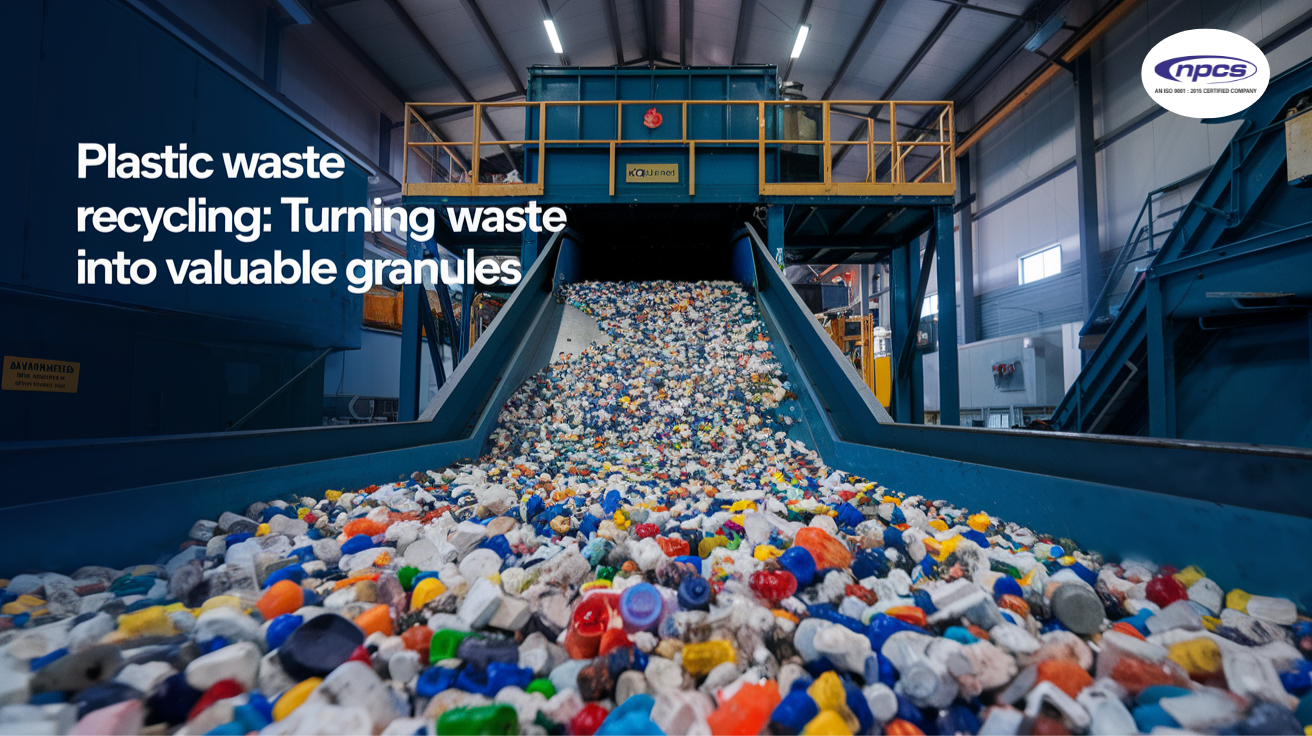The market for a cattle feed business provides promising opportunities for business owners to establish themselves. Proper growth and productivity of livestock depends heavily on the utilization of cattle feed. The proper development of healthy livestock depends on this key component, thus setting the foundation for the production of dairy products along with meats. Industry demand for animal products continues to grow worldwide, so the necessity for high-quality cattle feed increases.
Entering the cattle feed sector leads to sustainability along with financial profitability. We will analyze how the cattle feed business presents itself as a valuable investment opportunity in this blog’s discussion. The article presents an explanation of expansion drivers while delivering strategies to create this business successfully.
Understanding the Cattle Feed Business
Livestock nutrition relies on cattle feed because this mixture contains essential nutrients to enhance their health and productivity. Such feed contains vital ingredients, including grains together with protein elements alongside vitamins and minerals. The addition of this feed to dairy cattle nutrition leads to better growth results and enhances their health while improving milk production. Beef cattle experience better meat productivity with the addition of this feed. Manufacturers prepare feed products according to livestock requirements.
The business requires this feed to enable livestock to function at their peak performance level. The business process includes buying materials to produce animal nourishment before it concludes with farm purchases. The main consumer groups who purchase cattle feed consist of farmers together with dairy operators and operators who handle meat products.
Market Demand and Growth Potential
The cattle feed market shows continuous growth because of numerous primary contributing elements. Worldwide consumption of meat together with dairy products continues to experience an upward trend. Recent statistics show that the cattle feed market reached $78.68 billion in 2024. The market faces an estimated prediction of reaching $103.05 billion during the forecast period from 2030 to 2035. The marketplace shows a compound annual growth rate (CAGR) of 3.93% while it grows to $103.05 billion from its initial value of $78.68 billion during 2024. The market shows continuous growth because the rising need for livestock products to satisfy increasing consumer demand plays a central role. The food and beverage industry expansion strengthens the market demand for premium-quality cattle feed.
Key Drivers of Market Growth
1. Expansion of Livestock Production
Global demand for meat and dairy products continues to expand throughout the world. The demand for efficient livestock operations rises because of this situation. The growing industry of livestock farming requires an increased supply of cattle feed. As livestock numbers rise, the amount of feed required by the animals also increases. The health of livestock relies fundamentally on proper feeding practices, which need to be efficient. The expanding market demand creates opportunities for profit in the cattle feed business sector.
2. Health and Wellness Trends
People have developed growing concerns about their dietary health choices. The priority in meat and dairy production has shifted towards obtaining better product quality standards. Animals that remain healthy enable the production of high-quality goods deriving from both dairy and livestock farming. Stepped-up sales of balanced and nutritious feed for cattle have occurred due to market trends. The market for livestock feed that improves both their health and their quality status remains constantly in demand. Businesses that focus on producing health-focused cattle feed products have major business potential in the market.
3. Advancements in Animal Nutrition
New technological developments lead to better formulations of cattle feed. The application of modern technology produced better animal feed, which enhanced livestock health. Better formulations of feed through innovation have increased efficiency and boosted productivity rates. The feed quality directly impacts livestock health by producing better-performing cattle. New developments in cattle feed formulations will enable businesses to maintain a competitive position.
Profitability of Cattle Feed Business
Numerous circumstances make the cattle feed business exceptionally lucrative, mainly because of these conditions.
1. Consistent Demand from the Livestock Sector
Stability exists in the market for cattle feed products. The livestock sector depends on dependable nutritional products from farmers for their animals. A sustained growth in the livestock sector ensures the marketplace demands cattle feed moving forward. A stable demand pattern allows cattle feed production companies to maintain continuous revenue sources.
2. Diversification of Product Offerings
Cattle feed companies can expand their business by providing various types of animal feed to customers. The production of livestock-specific rations covers dairy cattle feed, beef cattle feed, and additional animal feed. Human demand for organic and non-GMO feed creates an opportunity for businesses to produce such products. The more diverse the product range, the greater the potential for profit. A business that provides specialty products can enter and serve particular market segments.
3. Export Opportunities
The world market requires a rising supply of premium cattle feed products. Large livestock populations in different countries require dependable supplies of feed. The export market for cattle feed provides exceptional business revenue opportunities. Businesses that enter export markets gain market expansion opportunities through which they can boost their revenue.
This document will explain the requirements for establishing a cattle feed enterprise.
A business establishment for cattle feed requires multiple equally important procedures.
1. Research and Planning
One must begin with intensive research on the cattle feed market to develop a successful business plan. Research the specifications that livestock farmers need along with their requirements for livestock feed. Determine your competitive edge by researching competitors, followed by implementing the chosen differentiation strategies. Using the business plan, you should identify goals, determine target markets, and establish operational procedures. Your execution strategy will provide all necessary direction to properly start and direct your business operations.
2. Sourcing Raw Materials
The production of cattle feed necessitates using prime raw materials from grains as well as protein meals alongside vitamins. Build constant business ties with your ingredient vendors so you get regular supply deliveries. Profitability maintenance heavily depends on obtaining premium-quality raw materials from affordable sources.
3. Manufacturing Facility Setup
A manufacturing facility acts as the foundation to manufacture cattle feed. A cattle feed facility requires access to apparatus for blending ingredients and grinding products and packaging systems. The facility requires adequate storage space for both raw materials and finished products. Your manufacturing plant must follow the requirements of all health and safety regulations. The manufacturing site needs complete cleanliness in addition to a logical setup and all essential production optimization tools.
4. Quality Control and Testing
The cattle feed business depends entirely on quality control practices. Regular laboratory inspections of both feed main ingredients and retail feed products verify their nutritional match to standards. The business should have an absolute quality control system that upholds product stability while ensuring reliability throughout the entire production process. A quality control program that delivers reliable results creates trust among customers, leading to future business contracts.
5. Distribution and Marketing
Implement an effective marketing plan that will advertise your products throughout the market. The business should promote its products using agricultural trade shows as well as online platforms and local markets. Your product distribution network should include established collaborative arrangements with farmers and cooperatives as well as feed stores. A dependable distribution system must be established to maintain constant sales levels.
Read More About: How to Start a Cattle Feed Production Business
Conclusion
The cattle feed business presents a profitable opportunity for entrepreneurs. With the global demand for livestock products growing, the need for high-quality feed is increasing. By focusing on innovation, quality control, and understanding market trends, cattle feed businesses can thrive. Offering specialized feed products can help businesses differentiate themselves in the market. Government support and export opportunities further enhance the potential for growth. With proper planning and execution, starting a cattle feed business can lead to long-term success. Niir Project Consultancy Services (NPCS) can assist in setting up and growing your business in this thriving sector.







